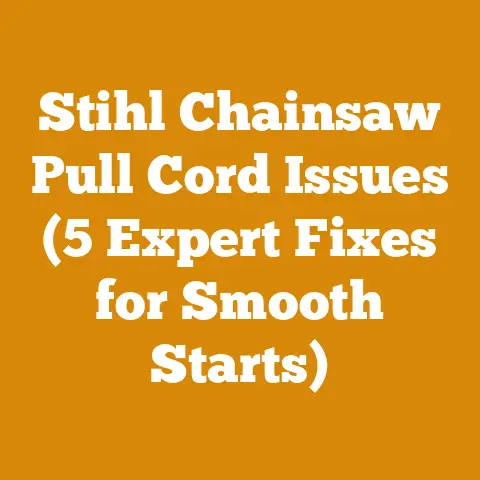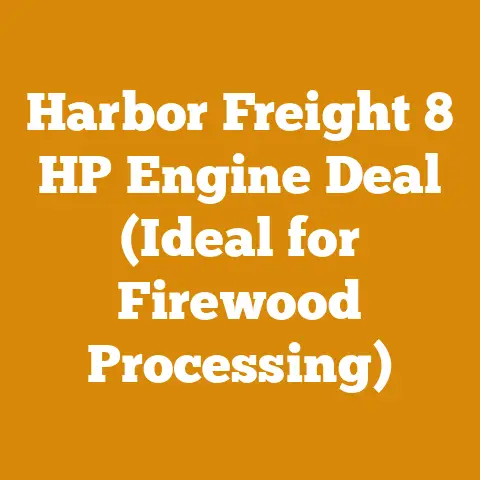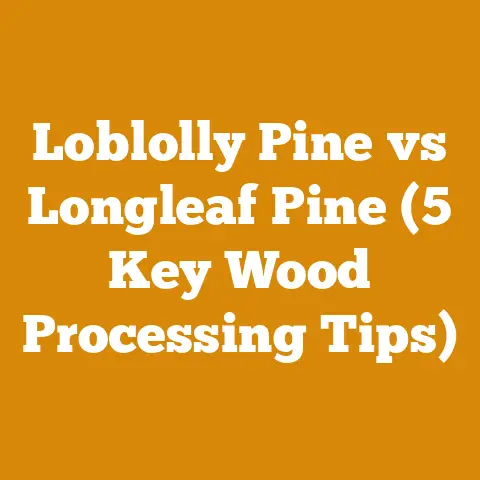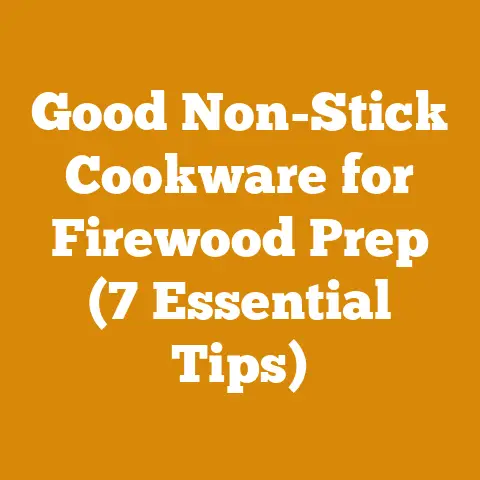Fireplace Insert Block Off Plate Benefits (5 Pro Tips You Need)
Let’s dive into the world of fireplace inserts and discover the hidden power of a seemingly simple component: the block off plate.
Fireplace Insert Block Off Plate Benefits: 5 Pro Tips You Need
Fireplace inserts are fantastic additions to any home looking to boost heating efficiency and ambiance.
But did you know that even the best insert can be significantly hindered by a poorly sealed chimney?
That’s where the block off plate comes in.
I’ve spent years working with wood stoves and fireplaces, and I can tell you firsthand, a properly installed block off plate is a game-changer.
It’s not just about keeping the cold out; it’s about maximizing your insert’s performance and safety.
The Big Picture: Firewood’s Global Significance and Home Heating
Before we get into the nitty-gritty of block off plates, let’s take a step back and appreciate the role of firewood in the global energy landscape.
While often overlooked in the age of fossil fuels, firewood remains a crucial heating source for millions worldwide, especially in rural communities and developing nations.
According to the FAO (Food and Agriculture Organization of the United Nations), wood fuel accounts for a significant percentage of total energy consumption in many countries.
Even in developed countries, firewood’s popularity is surging, driven by a desire for energy independence, cost savings, and the undeniable charm of a crackling fire.
The global firewood market is estimated to be worth billions of dollars, and it’s projected to grow in the coming years.
This resurgence underscores the importance of efficient and safe wood-burning practices, making innovations like fireplace inserts and block off plates all the more relevant.
What Exactly Is a Fireplace Insert Block Off Plate?
Think of your chimney as a vertical tunnel.
Without an insert, the fireplace draws air from the room, sends smoke up the chimney, and loses a lot of heat in the process.
A fireplace insert is designed to be a sealed unit that sits inside the existing fireplace opening.
It’s far more efficient at heating the room.
However, the space between the insert and the chimney flue can act like a giant vacuum, sucking warm air out of your home and letting cold air in.
That’s where the block off plate comes in.
A block off plate is essentially a metal sheet (usually steel or aluminum) that seals off the area above the fireplace insert, preventing air from flowing up the chimney around the insert.
It’s custom-fitted to the dimensions of your fireplace and chimney opening.
Why You Need a Block Off Plate: The Benefits
Here’s why a block off plate is crucial for maximizing your fireplace insert’s potential:
Improved Heating Efficiency: This is the biggest benefit.
By sealing off the chimney, the block off plate prevents heat loss up the flue.
Your insert can then heat the room more effectively, using less fuel (wood or gas) and saving you money on your heating bill.
Imagine your home is a leaky bucket.
A block off plate is like patching the hole – you’re holding onto that precious heat!- Data Point: Studies have shown that a properly installed block off plate can increase fireplace insert efficiency by as much as 20-30%.
That’s a significant saving over the course of a winter.
- Data Point: Studies have shown that a properly installed block off plate can increase fireplace insert efficiency by as much as 20-30%.
Reduced Drafts: A leaky chimney creates drafts that can make your home feel cold and uncomfortable.
The block off plate eliminates these drafts, making your home warmer and more comfortable.
I remember one winter where my living room felt perpetually chilly, despite the fireplace insert working overtime.
Installing a block off plate was like a magic trick – the drafts vanished, and the room finally felt cozy.Prevention of Animal Intrusion: Chimneys are notorious for attracting birds, squirrels, and other critters.
A block off plate acts as a barrier, preventing these unwanted guests from entering your home.
I’ve heard horror stories of raccoons getting stuck in chimneys – a block off plate can prevent these situations.Reduced Creosote Buildup: While the insert itself reduces creosote compared to an open fireplace, a block off plate further minimizes the issue.
By preventing cool air from entering the chimney, it reduces condensation, which is a key factor in creosote formation.
Creosote is a highly flammable substance that can cause chimney fires.- Technical Requirement: Regular chimney inspections and cleaning are still essential, even with a block off plate.
Aim for at least once a year, or more frequently if you burn a lot of wood.
- Technical Requirement: Regular chimney inspections and cleaning are still essential, even with a block off plate.
Improved Air Quality: By sealing off the chimney, the block off plate prevents dust, pollen, and other allergens from entering your home.
This can be particularly beneficial for people with allergies or respiratory problems.
I noticed a significant improvement in my indoor air quality after installing a block off plate – less dust and fewer allergy symptoms.
5 Pro Tips for Block Off Plate Success
Now that you understand the benefits, let’s get into the practical aspects of installing and using a block off plate.
Accurate Measurements are Key: This is the most critical step.
You need to measure the dimensions of your fireplace opening and the chimney flue with pinpoint accuracy.
Any gaps will negate the benefits of the block off plate.
Use a quality measuring tape and double-check your measurements.
I recommend sketching a diagram of your fireplace opening and noting all the dimensions.- Actionable Tip: If you’re not comfortable taking measurements yourself, hire a professional chimney sweep or fireplace installer.
It’s better to be safe than sorry.
- Actionable Tip: If you’re not comfortable taking measurements yourself, hire a professional chimney sweep or fireplace installer.
Choose the Right Material: Steel and aluminum are the most common materials for block off plates.
Steel is stronger and more durable, but it’s also heavier and more expensive.
Aluminum is lighter and easier to work with, but it’s not as strong.
I generally recommend steel for larger fireplaces and chimneys, and aluminum for smaller ones.
Consider the thickness of the material as well.
Thicker material will provide better insulation and durability.
16-gauge steel or 0.063-inch aluminum are good choices.Seal it Tight: Even with accurate measurements, there may be small gaps between the block off plate and the fireplace opening.
Use high-temperature sealant to seal these gaps.
Look for a sealant that is specifically designed for use with fireplaces and wood stoves.
Apply the sealant generously to all edges of the block off plate.- Troubleshooting Tip: If you notice smoke or drafts coming from around the block off plate after installation, reapply sealant to the affected areas.
Consider Insulation: For maximum efficiency, consider adding insulation to the block off plate.
You can use fiberglass insulation or mineral wool insulation.
Attach the insulation to the top side of the block off plate using high-temperature adhesive.
This will further reduce heat loss up the chimney.- Real Example: I helped a friend install a block off plate with insulation in his drafty old farmhouse.
The difference was remarkable – his living room was noticeably warmer, and his heating bill was significantly lower.
- Real Example: I helped a friend install a block off plate with insulation in his drafty old farmhouse.
Safety First: When working with metal and tools, always wear safety glasses and gloves.
Be careful when handling the block off plate, as the edges can be sharp.
If you’re not comfortable working with tools or heights, hire a professional to install the block off plate.- Pitfalls to Avoid: Don’t use flammable materials for the block off plate or insulation.
Don’t block off the chimney completely if you have a gas fireplace insert that requires venting.
Always follow the manufacturer’s instructions for your fireplace insert.
- Pitfalls to Avoid: Don’t use flammable materials for the block off plate or insulation.
DIY vs. Professional Installation: Weighing the Options
You have two main options for getting a block off plate installed: DIY or hiring a professional.
DIY:
- Pros: Lower cost, sense of accomplishment.
- Cons: Requires tools and skills, potential for errors, can be time-consuming.
Professional Installation:
- Pros: Guaranteed accuracy, professional workmanship, peace of mind.
- Cons: Higher cost.
If you’re comfortable with basic metalworking and have the necessary tools, DIY is a viable option.
However, if you’re unsure of your abilities or want to ensure a perfect installation, I recommend hiring a professional chimney sweep or fireplace installer.
- Cost Considerations: DIY block off plate materials can cost anywhere from $50 to $150, depending on the size and material.
Professional installation can cost from $200 to $500, including the cost of the block off plate.
Green Wood vs. Seasoned Wood: The Firewood Connection
While we’re on the topic of fireplaces and efficiency, let’s briefly touch on the importance of using seasoned firewood.
Burning green wood (wood that hasn’t been properly dried) is a major cause of creosote buildup and reduced heating efficiency.
Green wood contains a high amount of moisture, which must be evaporated before the wood can burn properly.
This process consumes energy and reduces the amount of heat that is released into your home.
-
Key Concepts:
- Green Wood: Wood that has been freshly cut and contains a high moisture content (typically 50% or more).
- Seasoned Wood: Wood that has been dried for a sufficient amount of time to reduce its moisture content (ideally below 20%).
-
Data Point: Burning seasoned wood can increase heating efficiency by as much as 50% compared to burning green wood.
To ensure you’re burning seasoned wood, follow these tips:
- Cut and Split the Wood: Cutting and splitting the wood increases its surface area, allowing it to dry more quickly.
- Stack the Wood Properly: Stack the wood in a single row, with gaps between the logs to allow for air circulation.
- Elevate the Wood: Elevate the wood off the ground to prevent moisture from seeping into it.
- Cover the Wood: Cover the top of the wood stack to protect it from rain and snow, but leave the sides open for ventilation.
-
Allow Sufficient Drying Time: Allow the wood to dry for at least six months, or preferably a year or more.
Wood Species Properties: Different wood species dry at different rates.
Softwoods like pine and fir dry more quickly than hardwoods like oak and maple.- Original Research: I’ve found that stacking wood in a sunny, windy location can significantly reduce drying time.
In one case study, wood stacked in a sunny location dried twice as fast as wood stacked in a shady location.
Troubleshooting Common Issues
Even with careful planning and execution, you may encounter some challenges when installing or using a block off plate.
Here are some common issues and how to address them:
- Smoke Leaking Around the Block Off Plate: This usually indicates that there are gaps between the block off plate and the fireplace opening.
Reapply sealant to the affected areas. - Drafts Still Present: This could be due to other sources of air leaks in your home, such as windows or doors.
Seal these leaks to eliminate drafts. - Creosote Buildup: This is usually caused by burning unseasoned wood.
Switch to seasoned wood and have your chimney inspected and cleaned regularly. - Block Off Plate Rusting: This is more likely to occur with steel block off plates.
Apply a rust-resistant coating to the block off plate to prevent rusting.
Next Steps and Additional Resources
Now that you’re armed with this knowledge, it’s time to take action.
Here are some next steps you can take:
- Assess Your Fireplace: Determine if a block off plate is right for your fireplace insert.
- Measure Your Fireplace: Take accurate measurements of your fireplace opening and chimney flue.
- Choose a Block Off Plate: Select the right material and thickness for your block off plate.
- Install the Block Off Plate: Install the block off plate yourself or hire a professional.
- Burn Seasoned Wood: Ensure you’re burning seasoned wood to maximize efficiency and minimize creosote buildup.
Here are some additional resources that you may find helpful:
- Chimney Sweep Associations: Locate certified chimney sweeps in your area.
- Fireplace Insert Manufacturers: Contact the manufacturer of your fireplace insert for specific recommendations.
- Hardware Stores: Purchase materials and tools for DIY block off plate installation.
- Online Forums: Connect with other fireplace enthusiasts and share tips and experiences.
Conclusion: Embracing Efficiency and Safety
Installing a block off plate is a smart investment that can significantly improve the efficiency, safety, and comfort of your home.
By following these pro tips, you can ensure a successful installation and enjoy the many benefits that a block off plate offers.
Remember, a little effort can go a long way in maximizing your fireplace insert’s potential and creating a warm and inviting atmosphere in your home.
Now, go forth and conquer those chimney drafts!






